
- Home
- Brand
- Features
- Finish
- Items Included
- Type
- Alternator (4)
- Body Shell (127)
- Bolt Kit (8)
- Brake Disc Rotor (4)
- Bump Stop (3)
- Clutch Kit (29)
- Coil Spring (3)
- Condenser (5)
- Control Arm & Part (12)
- Evaporator (5)
- Exhaust Box (4)
- Exhaust Pipe (2)
- Headlight Assembly (12)
- Heater Core (13)
- Hvac Control Panel (12)
- Parking Light (8)
- Rear Light Assembly (15)
- Shock (6)
- Tail Pipe (3)
- Turbo Charger (7)
- Other (369)
- Warranty
SAAS Polished Oil Catch Can + Fitting Kit To Suit Toyota Landcruiser 200 Series
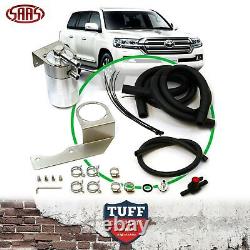
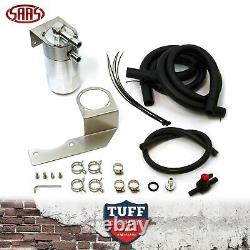
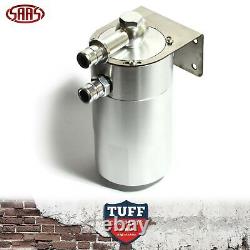
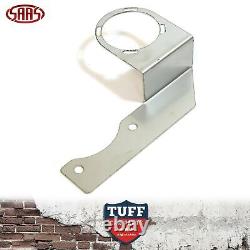
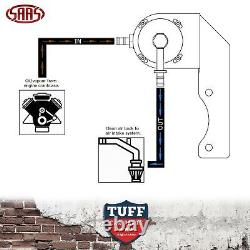

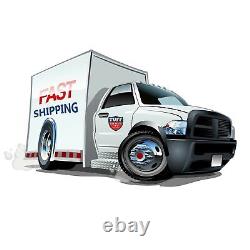


SAAS TRAX Polished Billet Aluminium 4WD Oil Catch Can with Fitting Kit. Suitable for Toyota Landcruiser 200 Series, 2007 - 2021. Fits 4.5lt Diesel V8 Models, 4WD Wagon. 360 Degree Swivel Top, 500ml Capacity. SAAS began just over 65 years ago and have brought to the market quality products at affordable prices. The reason for the company's success has come from committed staff with a combined experience of over 100 years in the Automotive Aftermarket Retail, Trade, Wholesale and Distribution. Not all Oil Catch Cans are created equal. SAAS Automotive are excited to release the latest addition to their extensive range of Oil Catch Cans, the new TRAX Billet Aluminium units that encompass both form and function. In factory OEM configuration, your engine's crankcase would typically be ventilated back through its intake system, usually via a PCV valve. Whilst this is a simple workaround for manufacturers and great for smog laws, it's not the most optimal setup for your engine and ultimately robs the engine of horsepower and clean air. This effectively feeds your engine the oil fumes it's working so hard to pump out, and runs the risk of coating your intake runners, injectors, even valves and pistons with the residual oil mist discharged from your crankcase. Now there's a better way to keep your engine's intake system free from the crankcase oil contaminants generated by engine blow by - with a SAAS fully baffled Oil Catch Can. Designed for the Australian off-road, the SAAS TRAX Billet Oil Catch Can will be your engine's best friend! Why use an Oil Catch Tank?
Every internal combustion engine by nature acts as a massive pump. As a result, your engine's crankcase creates positive pressure which results in oil blow-by, and this oil-infused mist needs to vent somewhere - and not straight to atmosphere. Traditionally, this is handled by the PCV (Positive Crankcase Ventilation) system, a process that routes the oil-mist back through the engine's air intake for burn-off during combustion.
Great in principle, but what often happens is a build of sludge over time that can foul EGC valves, intake manifolds and runners, glaze pistons and cylinder walls and reduce the efficiency of your engine. Rather than a catch can that vents to atmosphere via an air filter, this catch tank still operates as a "sealed" system that purifies the air going back into your engine and results in no additional emissions. Through use of a series of baffles in this SAAS catch tank and the featured bronze 40-micron filter, the oil vapour is captured and separated from the incoming air, which is converted back to a liquid and collected in the bottom of the tank. This leaves the resulting clean air to pass through the outlet port and back into your engine.Now, ensure you have the perfect fit and stand above the competition with their custom-made vehicle specific fitting kits giving you a factory style finish to your installation! SAAS TRAX Polished Billet Aluminium Oil Catch Can with Fitting Kit. Suitable for 4.5lt Diesel V8 Toyota Landcruiser 200 Series, 2007 - 2021.
Tank Location: Under factory fuel filter assembly. Internal 40-micron bronze filter - removable, washable, replaceable.
Additional internal baffles to ensure maximum trap of waste oil particles. Features 360-degree swivel, top mounted banjo fitting for fully adjustable pipe exit.
Supplied complete with catch tank, fittings, laser cut stainless steel bracket, bronze 40-micron filter, fitment tools/sockets and installation instructions. Not suitable for Petrol models. As this is a sealed oil catch tank design, SAAS recommends cleaning out the tank and filter every service interval for optimal performance. More frequent cleaning may be required for performance engines or vehicles in harsh conditions.
